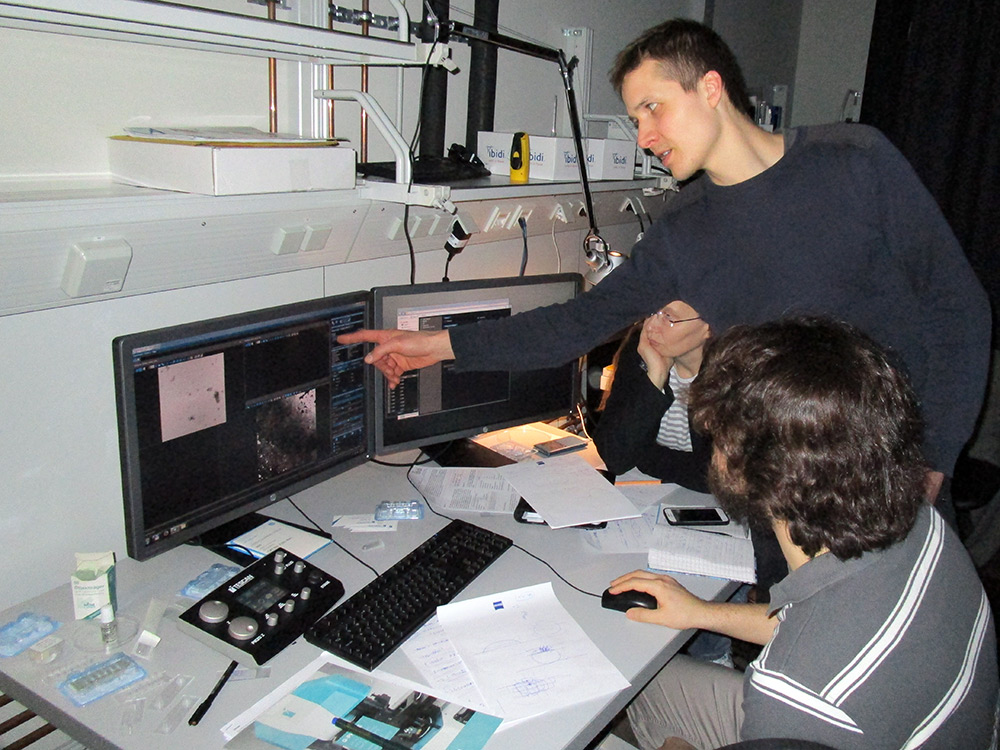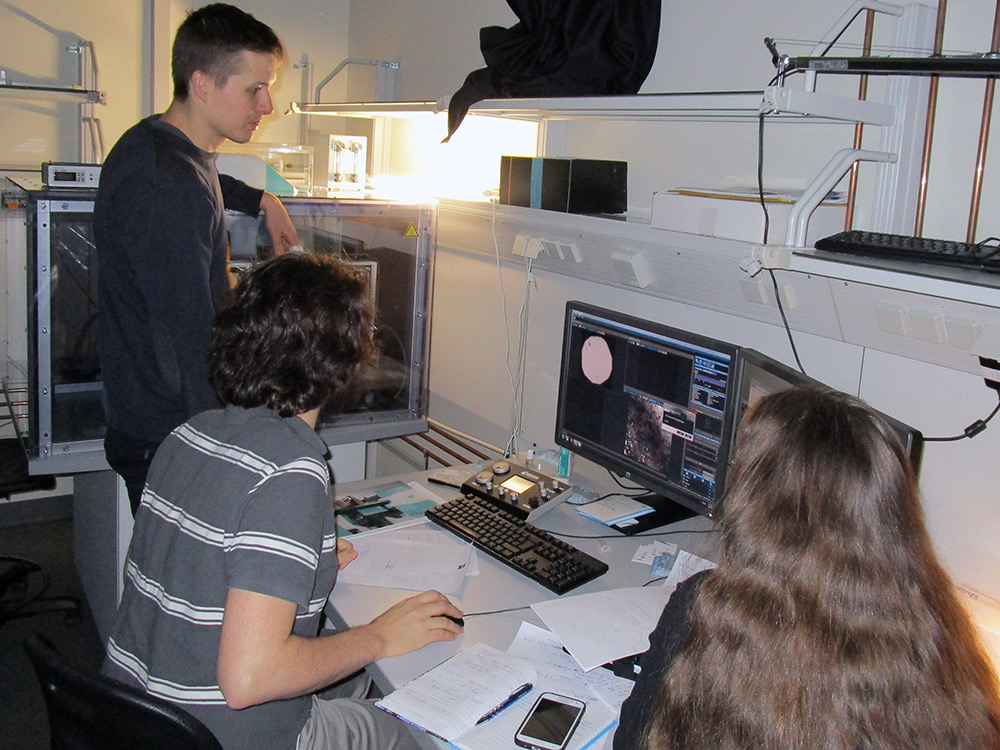Albert Thommen – a member of the Jochen Rink research group –, Jan Peychl, Britta Schroth-Diez, Martin Lošťák and Jan Balvan operating the Q-PHASE microscope in the MPI-CBG light microscopy facility located in Dresden. The goal of this experiment was to compare the dry mass and cell size distribution between cell populations from different-sized planarian flatworms.
Planarians contain large numbers of pluripotent adult stem cells that continuously divide. The production of new cells is balanced by the death of old cells in a dynamic steady state in a way that the entire animal continuously rebuilds itself. Feeding shifts the balance towards addition of new cells by causing a brief burst of increased stem cell divisions. Starvation shifts the balance towards a net loss of cells, thus literally shrinking the animals (“de-growth”). Even though the size of a worm can therefore fluctuate dramatically over time, the animals manage to scale their external and internal proportions within a 40-fold range in body length. As if this feat were not enough, planarians are capable to regenerate in their entirety even when chopped into tiny pieces.



